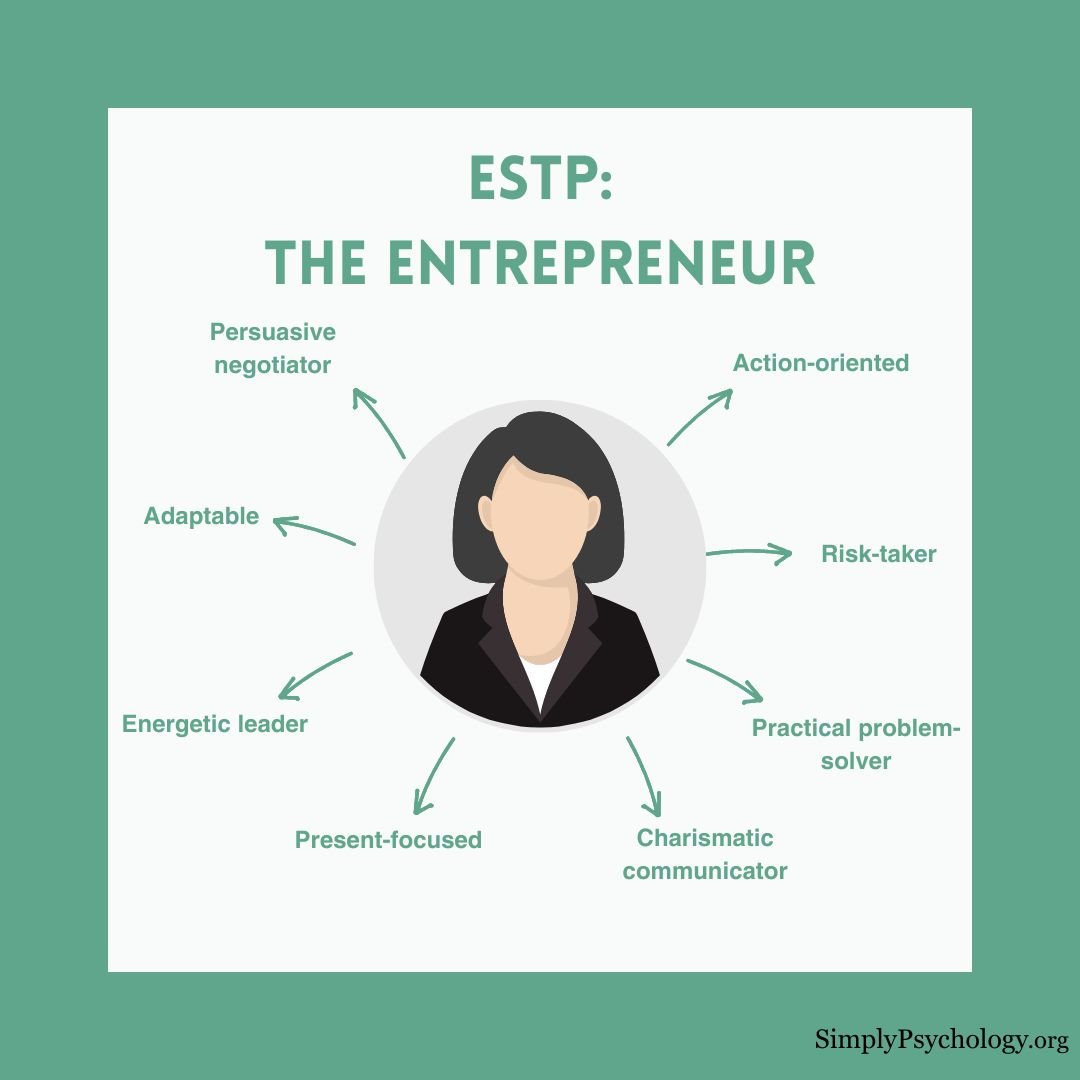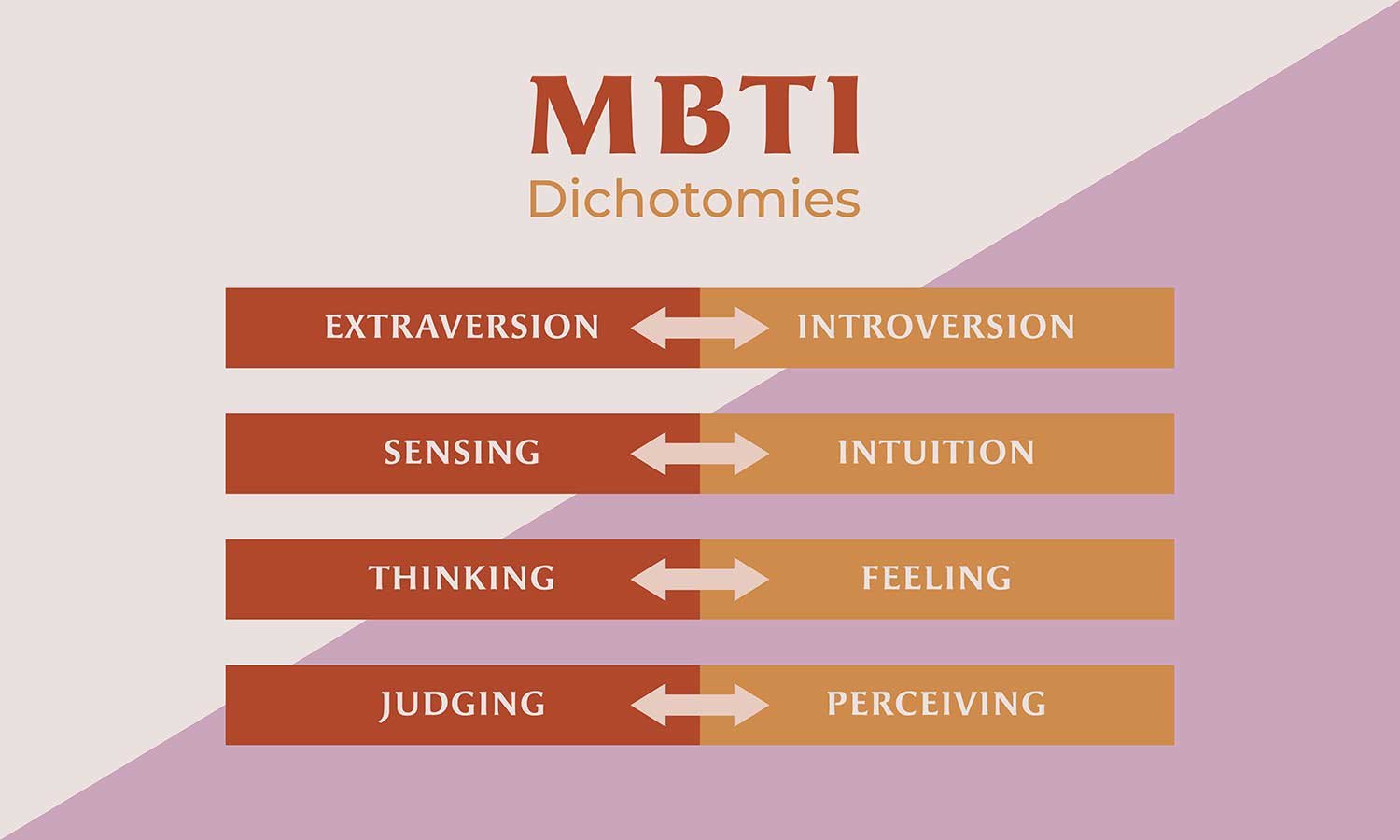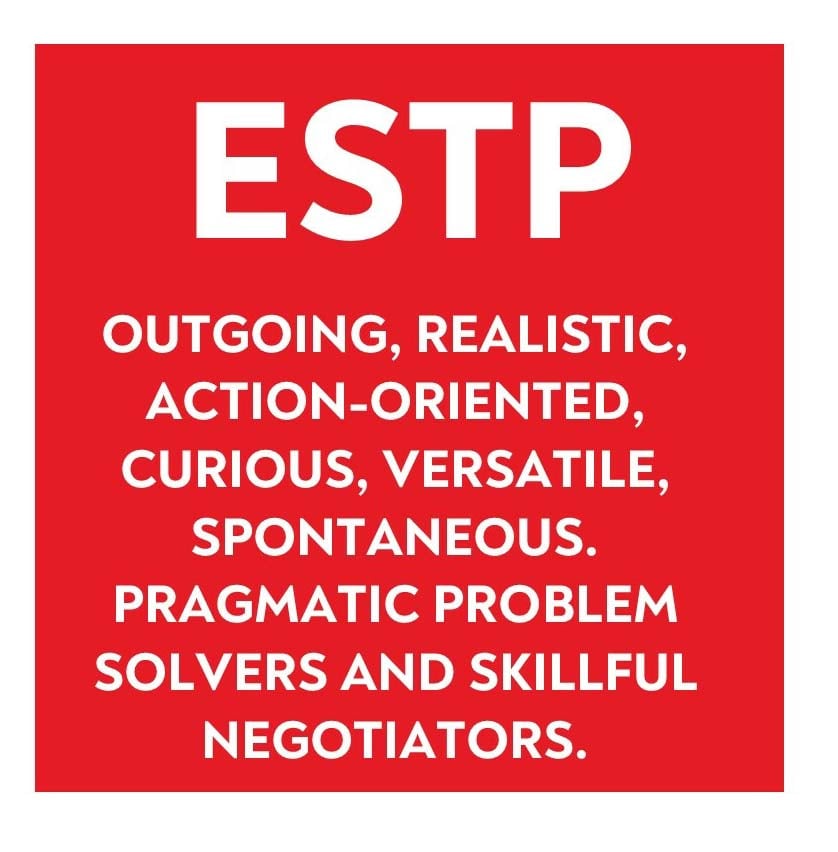ESTP (extraversion, sensing, thinking, perceiving) is a four-letter code acronym used to represent one of the 16 Myers-Briggs personality types.
An Overview of the ESTP Personality Type
ESTPs are sometimes referred to as “the Persuader,” “the Dynamo,” “the Adventurer,” or “the Entrepreneur.” INFJ is the opposite personality type of ESTP.
People with this personality type tend to be action-oriented, taking logical approaches to obtain results and solve problems quickly. They are energetic, charming, and outgoing individuals who enjoy spending time and pursuing adventure with wide circles of friends and acquaintances.
They enjoy living in the present moment and do not spend a lot of time looking ahead to the future. They are practical thinkers who place a higher value on objectivity rather than personal feelings.

It is believed to be one of the most common personality types. ESTPs comprise:
- 4% of the general population
- 6% of men
- 3% of women
Famous ESTPs include Donald Trump, Miley Cyrus, George W. Bush, Madonna, Thomas Edison, and Eddie Murphy.
| Strengths | Weaknesses |
|---|---|
| Personable | Impatient |
| Energetic | Impulsive |
| Influential | Easily bored |
| Observant | Judgmental |
| Independent | Difficult to please |
Key ESTP Characteristics
ESTPs are highly extroverted individuals
- They are typically described as outgoing, gregarious, and active, bringing a sense of dynamic energy and life to any room they enter.
- They love to be the center of attention and tend to have a good sense of humor, amusing everyone around them with their captivating personalities.
- They prefer to lead a fast-paced lifestyle where they can live in the moment and act on impulse.
ESTPs have strong social skills
- They are keen observers, able to pick up on small details that others never notice and often seem like they are a few steps ahead of the conversation.
- They are able to read people well, assess their surroundings, and adapt quickly, keeping their interactions exciting and engaging.
- They use these detailed observations to help create connections with others.
People with this personality type are action-oriented
- They are decisive thinkers, quickly assessing situations and devising immediate solutions when confronted with a problem as opposed to spending a great deal of time planning.
- They place a higher value on objectivity and fact rather than personal feelings and emotion when making decisions.
- They appreciate straightforward and rational information and are bored by abstract theories or concepts.
ESTPs are natural leaders
- They are confident, self-assured individuals with apt communication and networking skills. They have a spirit of mental toughness and a sense of competition that makes them highly persuasive and relentless in pursuing what they want.
- They carry themselves as bold, powerful, and determined, often getting what they are after and fearlessly taking risks along the way.
Cognitive Functions
The MBTI suggests that the four different cognitive functions (thinking, feeling, intuition, and sensing) form a hierarchy where each function is either directed outwardly (extroverted) or inwardly (introverted). The order of these functions determines one’s personality.

The dominant function is the primary aspect of personality, while the auxiliary and tertiary functions play supportive roles.
Dominant: Extraverted Sensing
- ESTPs love being surrounded by others. They draw energy from social interactions and their surrounding environments, focusing on the sights, sounds, and action going on immediately around them.
- They are high energy, outward-turning individuals who enjoy learning through experiences.
Auxiliary: Introverted Thinking
- ESTPs are logical and rational. They process information in pragmatic ways and know how to maneuver their world efficiently.
- They have a strong sense of self control and discipline that enables them to work independently and achieve their goals.
Tertiary: Extraverted Feeling
- This component of the ESTP personality focuses on creating social harmony and developing relationships with others.
- ESTPs enjoy being the life of the party, engaging in conversations with anyone around them.
Inferior: Introverted Intuition
- This function tends to have a smaller influence on the ESTP personality type, leading people to make impulsive decisions and jump to conclusions that are not backed up by evidence.
- However, when well-developed, ESTPs are able to see patterns and make connections to help them gain a sense of the future.
- Intuition is not an ESTPs strong suit, and so when they can develop these strong gut reactions, they can often be inaccurate.
ESTP Hobbies, Interests, and Careers
People with the ESTP personality type tend to thrive in jobs that involve working with others. Because of their strong people skills, natural boldness, and social intelligence, they tend to do well in careers in sales, business, and marketing.
They are also fast thinkers who act quickly in a crisis, making them well-suited for emergency responder positions such as paramedics, police officers, or soldiers.
ESTPs are concrete and hands-on workers who like a tangible product, so working as a contractor, mechanic, or architect is also well suited for an ESTP.
ESTPs also find success in careers that involve sports, whether on the field as an athlete or coaching on the sidelines. They enjoy the thrill of the competition and pushing themselves to their physical limits.
Popular hobbies for an ESTP include a wide variety of hands-on physical activities, especially team sports and risky or adventurous activities like race car driving, boxing, or flying.
ESTP Work Environments
ESTPs work best in fast-paced, active environments. They dislike routine and monotony and tend to have trouble sitting still or being stuck behind a desk.
They want the flexibility to solve problems without having to follow strict guidelines or plans and the freedom to explore without being micromanaged.
ESTPs are well suited for work environments where they can live on their own terms and set small, measurable, and attainable goals to keep them on track day-to-day.
They are usually the most comfortable in management or freelance positions.
ESTP Personal Relationships
As highly extroverted individuals, ESTPs gain energy from being around others. They have strong people skills and tend to be easygoing, charming, and friendly in social settings.
ESTPs can get along with just about anyone and make new friends wherever they go. They crave adventure and spontaneity and will attract friends who share a similar zest for life.
They are masters at negotiating with others and influencing their friends to join in on their explorations. They sometimes struggle with commitment as they prefer to live in the moment rather than thinking about their long-term plans.
They also have little desire to engage in serious or emotional discussions about feelings as they prefer topics that can be explored through action and adventure.
ESTPs are great at interacting with other people and have charismatic personalities that make them naturally popular.
Tips for Interacting With ESTPs
Friendships
As ESTPs crave thrill and adventure, they get along best with friends who are always ready for a new experience.
They appreciate excitement and novelty and love exploring interesting ideas, so when interacting with an ESTP, it is important you are prepared to have fun and join in on these adventures.
Relationships
As partners, ESTPs are fun-loving and flirtatious, always looking for fun ways to keep their relationships exciting. They grow bored with routine, and want a partner who will appreciate their willingness to explore and allow them the freedom to pursue novel adventures.
It is important to be aware that ESTPs struggle with making long-term commitments.
When in a relationship with an ESTP, try and take things day by day while also helping them strengthen these neglected traits like emotional sensitivity and future planning.
Parenting
ESTP parents are often described as playful and flexible. They connect with their children through a shared appreciation for spontaneity and hands-on activities.
They encourage their children to take risks and seek adventure by giving them the children to explore and follow their hearts.
ESTP parents struggle with emotional connection but rather bond with their children through shared activities and experiences.
Test
Answer these questions to find out if ESTP might be your personality type:
- Do you enjoy being the center of attention and energize others with your dynamic presence?
- Are you action-oriented, preferring to solve problems quickly rather than spending time planning?
- Do you thrive in fast-paced environments and get easily bored with routine?
- Are you skilled at observing and adapting to your surroundings?
- When making decisions, do you tend to rely more on objective facts than on emotions or abstract theories?
- Do you enjoy living in the present moment and pursuing spontaneous adventures?
- Are you naturally persuasive and confident in social situations?
- Do you prefer hands-on experiences over theoretical discussions?
- Are you drawn to taking risks and pushing your physical limits?
- Do you find it challenging to make long-term commitments or engage in serious emotional discussions?
If you answer “yes” to most of these questions, you may have ESTP personality traits. However, remember that personality is complex, and a professional assessment would be needed for a definitive personality type determination.
References
King, S. P., & Mason, B. A. (2020). Myers‐Briggs Type Indicator. The Wiley Encyclopedia of Personality and Individual Differences: Measurement and Assessment, 315-319.
Myers, I. B. (1962). The Myers-Briggs Type Indicator: Manual (1962).
Myers, K. D., & Kirby, L. D. (2015). Introduction to type: A guide to understanding your results on the MBTI assessment. Sunnyvale, CA: CPP.
Myers-Briggs Type Indicator. (2019, May 28). New World Encyclopedia, Retrieved from https://www.newworldencyclopedia.org/p/index.php?title=Myers-Briggs_Type_Indicator&oldid=1020015.
Myers, Isabel B.; Myers, Peter B. (1995) [1980]. Gifts Differing: Understanding Personality Type. Mountain View, CA: Davies-Black Publishing. ISBN 978-0-89106-074-1.
Pittenger, D. J. (2005). Cautionary Comments Regarding the Myers-Briggs Type Indicator. Consulting Psychology Journal: Practice and Research, 57(3), 210-221.
The purpose of the Myers-Briggs Type Indicator®. The Myers & Briggs Foundation: MBTI Basics. (n.d.). Retrieved from https://www.myersbriggs.org/my-mbti-personality-type/mbti-basics/



